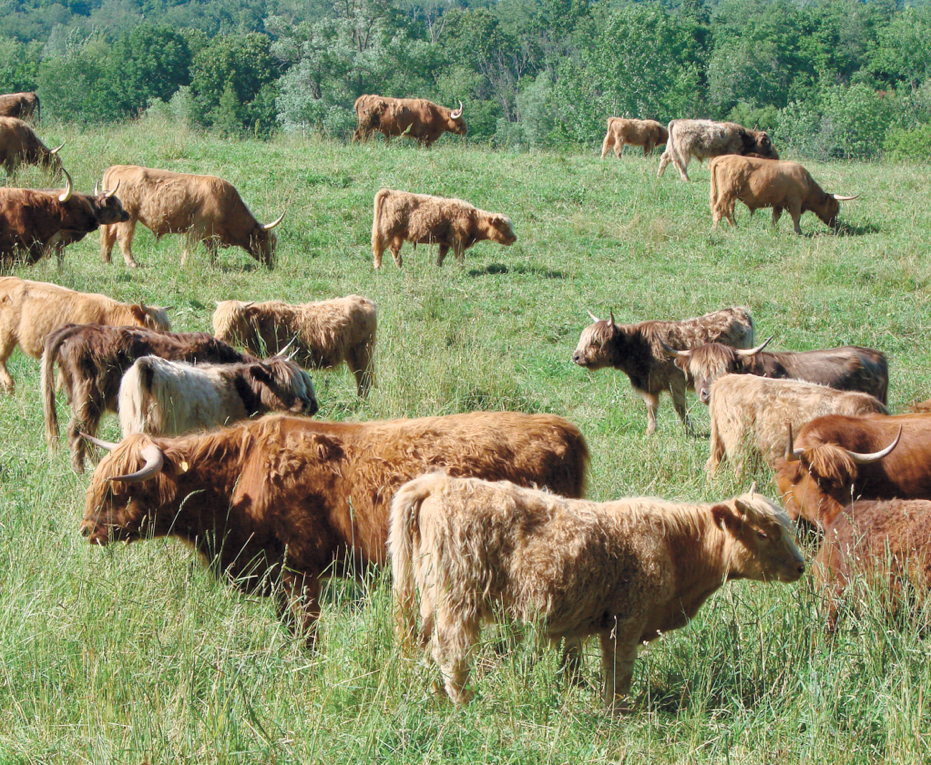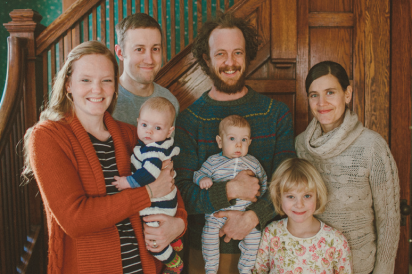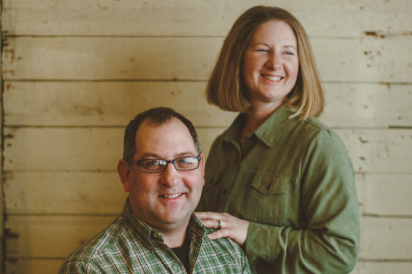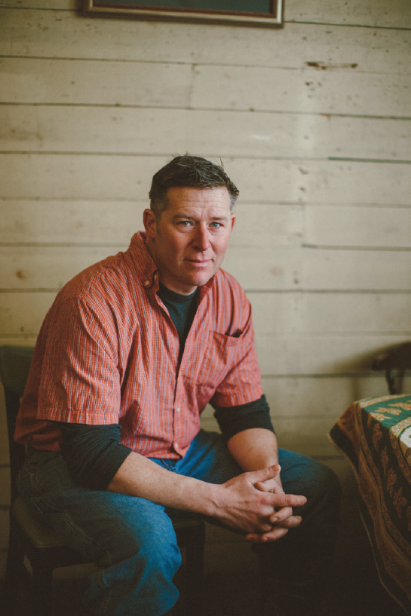Holy Cows?
Back in my teen years, when I considered becoming a vegetarian, I lamented the impact of humans on plant and animal life. My wise mother shared Kahlil Gibran’s poem, The Prophet, with me:
“Would that you could live on the fragrance of the earth, and like an air plant be sustained by the light.
But since you must kill to eat, and rob the newly born of its mother’s milk to quench your thirst, let it then be an act of worship.”
—Kahlil Gibran, The Prophet
Then she made my favorite pot roast for dinner, and I could not refuse.
Farmers who raise pastured meat on small-scale farms might not call their vocation an act of worship, but they have chosen to live close to the life cycle of animals from birth to table. They know that the quality of meat is directly related to the quality of life of the animal and how it is raised.
BLUE HERON FARM
Millersburg, Indiana
Pastured meat, according to Adam Derstine of Blue Heron Farm, is “meat from animals that have spent their lives with access to fresh ground on a regular basis and depend on that ground for nutrition and bedding. It’s more than not confining the animals; it’s about using pasture to keep them healthy and tasty.”
Adam and his wife, Elise, were living in Washington, DC, when they discovered Michael Pollan’s The Omnivore’s Dilemma and fell in love with the idea of farming and raising their own meat. Eventually they moved back to Goshen, Indiana, city of their alma mater, and teamed up with Tom Stinson and Cassandra Byler to form Blue Heron Farm.
Tom and Cassandra, who began farming produce in 2001, now raise sheep, beef and chickens on their home farm in Millersburg. Adam and Elise raise pigs on 13 acres of fallow fields overgrown with oak, apple and cherry trees. Last year Blue Heron decided to experiment with feeding their hogs whey, a by-product of cheesemaking that is highly nutritious but would otherwise go to waste. The results: delicious.
Last summer I visited the Millersburg farm with my granddaughter. While she clung to me, afraid of the dog and the chickens, Tom and Cassandra’s 7-year-old daughter showed us around the farm with the confidence of a child raised outdoors and around animals. This fall both Blue Heron families welcomed new babies, who will likely have the same opportunity.
GRASS IS GREENER MEATS AND PRODUCE
Bremen, Indiana
John and Toni Rowe raise pastured meat on their 20-acre farm in Bremen, Indiana. Three years ago they embarked on this venture both to offer their family the experience of farm life—John’s farming heritage reaches back four generations—and to raise healthier meat for their food. Friends began asking the Rowes to raise animals for them, too. Their Amish neighbors have also taken an interest, recognizing methods that their grandfathers once used.
The Rowes have a passion for heritage breeds, and use the Slow Food movement’s Ark of Taste in determining the breeds they raise: Red Wattle hogs, Red Poll cattle, St. Croix and Tunis sheep, Red Bourbon turkeys and Freedom Ranger chickens.
Their business has grown rapidly, according to Toni: They started in March 2011 with about 400 meat chickens, about 40 turkeys, eight pigs, three cows and two calves. In just three seasons, their direct sale of meat grew to nearly 1,000 poultry, two dozen hogs, eight beef and a half-dozen lambs for local families’ tables.
On the side, Toni has started the “Dirty Hog” soap business, using Red Wattle lard as a base, in an effort to use as much of each animal as possible to create another marketable product.
Clearly, the respect for life is at the heart of the Rowes’ farming enterprise. In response to my question about the family’s relationship to the animals they raise, Toni told me: “At our table, we like to share and retell stories we have about the animal we are using for food. It is part of the respect we show toward the animals we raise. It also helps to reinforce to our children that the ultimate goal of our livestock is nutrition provisions for our family.”
HEBRON FARMS
Vandalia, Michigan
Brothers Chris and Richard Hebron, with the help of Richard’s daughter, were loading a truck for deliveries in Chicago, South Bend, Detroit and Ann Arbor when I drove up the icy road to their farm, with its striking red saltbox house and mustard-yellow shed, which houses their freezers. Richard; his wife, Annette; and their two children live on the farm. Chris and his wife, Michelle, along with their four children, live in South Bend but plan to move to the farm this spring.
The Hebron family began farming in southern Michigan almost 170 years ago, but the current Hebron Farm was purchased in 1976 by Tony Hebron, father of Chris and Richard. Together they have been raising grass-fed heritage Highland cattle for over 30 years, but began direct marketing the meat about 15 years ago. In addition to Highland Beef Cattle, the Hebrons raise hogs, turkeys, sheep and chickens.
Like the other farmers in this article, they use the Joel Salatin method of moveable pens for pasturing their 5,000 chickens and offer their larger animals a non-GMO grain supplement in the winter. animals live on the farm year-round and are outdoors almost all of the time. The Hebrons raise vegetables in the spring and summer, and produce makes up half of their summer CSA business. Their direct marketing includes deliveries to Chicago, South Bend, Ann Arbor and Detroit, and they are a weekly presence at the Purple Porch Coop in South Bend.
A COMMITMENT TO RAISING BETTER MEAT
Raising pastured meat on a family-size farm takes whole-hearted commitment and daily chores. The animals must be fed and watered every day, their births attended, their health monitored. The meat must be butchered, inspected and marketed. And the enterprise needs to be profitable enough to cover the substantial expenses and leave something more for the farmers to live off of than a freezer full of meat.
Moreover, it takes conviction, passion, creativity, intelligence and a desire to engage in lifelong learning. Blue Heron Farm, Grass is Greener Farm and Hebron Farms are three examples of how the whole community benefits when local farm families are willing to make that effort.










